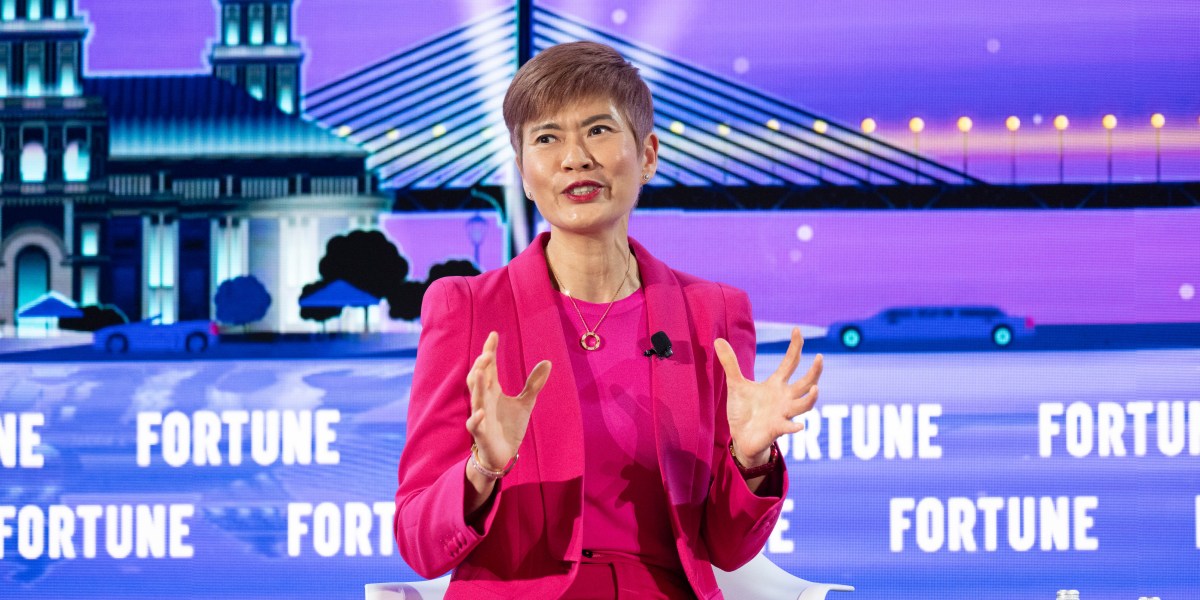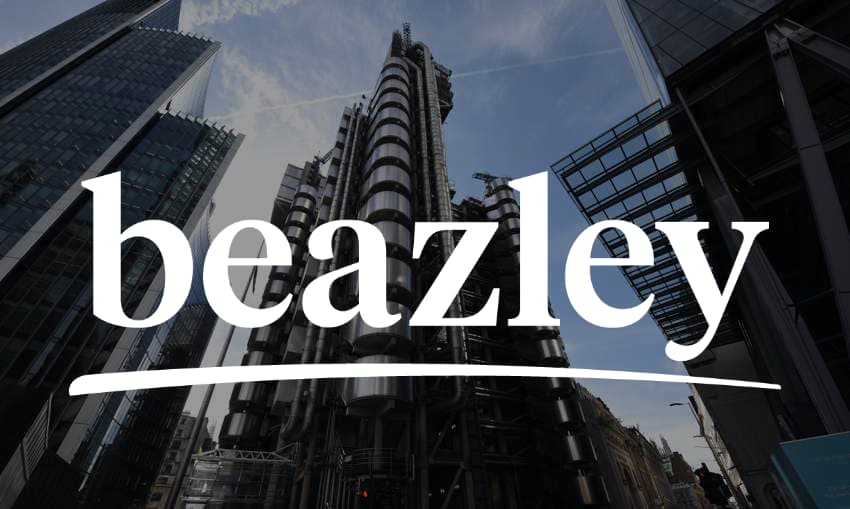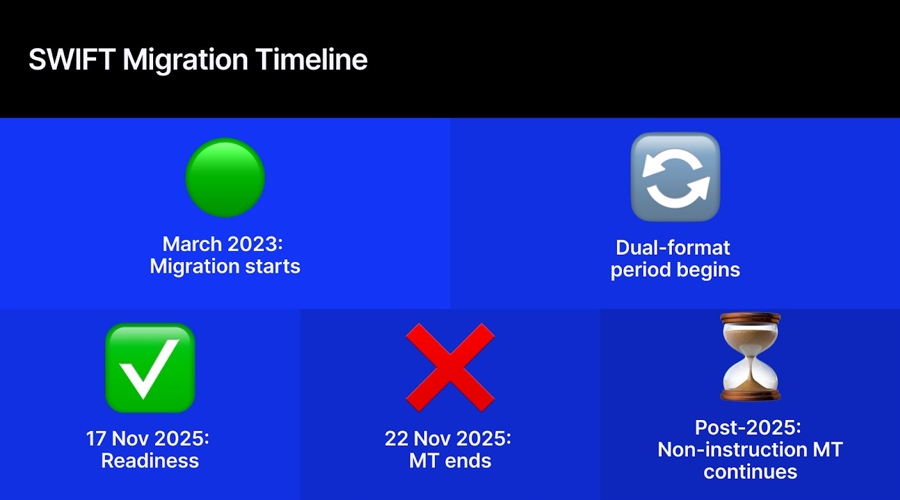The Toronto-Dominion Bank (NYSE:TD) Scotiabank 24th Annual Financials Summit Conference September 6, 2023 10:25 AM ET
Company Participants
Bharat Masrani – Group President and CEO
Conference Call Participants
Meny Grauman – Scotiabank
Meny Grauman
Okay. So we are back for the second group of companies. It’s my pleasure now to introduce TD Bank Group’s President and CEO, Bharat Masrani. Good to see you, Bharat.
Bharat Masrani
Good to see you.
Meny Grauman
Have a seat. There’s some water here.
Bharat Masrani
Thank you.
Meny Grauman
Thanks so much for being here. I hope you had a good summer.
Bharat Masrani
Yes. It’s over, unfortunately. But yes, I did.
Meny Grauman
The weather is lingering so that’s…
Bharat Masrani
It is. It’s a good thing.
Meny Grauman
Before we get into things, I want to follow-up on one specific issue. TD recently disclosed that it’s the subject of a DOJ investigation into its AML practices. And I just want to know if there’s any update you can share on that specific topic?
Bharat Masrani
Nothing to update. The statement was put out, so no change there. Only thing I’d emphasize is that I’m confident in time we will enhance the program as required.
Question-and-Answer Session
Q – Meny Grauman
Understood. I want to focus on the U.S. first. And if we go back to the Q2 earnings call, you highlighted some ambitious growth plans for the U.S., and I was hoping that we could revisit that, especially in the context of — a lot’s going on in the U.S. over the last few months. The U.S. banking crisis in particular. It’s a challenging operating environment for U.S. banks. So maybe to kick things off first, in the wake of the U.S. banking crisis, does that change how you’re looking at the U.S. market? And in fact, does it create any opportunities for TD in the U.S?
Bharat Masrani
Well, first, to start off, and we’ve talked about this many, many times before, and we have a fantastic franchise. We just surpassed serving 10 million customers in our U.S. franchise, from Maine to Florida. We got 27,000 talented bankers there. We are in some of the best markets in the United States, Metro New York, Metro Philadelphia, Metro Boston, Miami, Washington.
And I think the part that sometimes we don’t talk enough about, 77% of our U.S. deposit base on the retail side is in markets where TD is already top 3. So, I think the platform we have, and more and most great thing we have is the brand, TD Bank, America’s most convenient bank. So I really like our position. We’re already the eighth largest domestic bank in the country.
And yes, markets can be choppy. U.S. is going through a phase here. You talked about the mini banking crisis we had. The economy, there seems to be more debate as to what direction it’s going to go. But overall, it continues to be very resilient, and I continue to be very optimistic regarding our franchise in the United States.
Meny Grauman
And just looking at it more from a macro perspective, even ignoring the crisis, which definitely appears to be over, but there’s obviously – there’s a cyclical component to the outlook in the U.S., but also it appears a secular component as well, just a tougher operating environment, and tougher regulatory or environment. So, I’m curious if you agree with that assessment. And then, what are the implications for the earnings power of the franchise that you currently have in the U.S.? And we are talking more about growth plans, but what about the here and now?
Bharat Masrani
Well, firstly, the environment, as you said, on the one hand, yes, more unpredictability, more of a regional. It depends on the region you are in the U.S. and have a huge difference. There is already a proposal for changing bank regulation. A big part of that being the inclusion of AOCI in capital. But for TD, a lot of these changes that are being proposed on a consolidated level, they’re not material enough to change the way we think of running our operation there.
You’re right. I think over the long-term, it is obvious that the new rules apply to banks over $100 billion in assets. So, there will be some puts and takes depending on the market as to who can get there quickly, who is able to figure out the system. Then you have the economic backdrop, which is more unpredictable. I think, there seems to be consensus building that we’re closer to the end, than we are at the beginning of the rate cycle.
But my view is, yes, we might engineer a soft landing, but it doesn’t mean that there will not be dislocation, there will not be some kind of turmoil. It’s only after you go through a whole cycle, you realize how bad it was, and not going through it. So, I think there are some sectors where banks will thrive, and there are others where they will not. I think the great thing about us is, the markets that we are in, I feel very good about.
These are fundamentally strong markets, even if we get into a downturn, they should come back far quickly than perhaps others. And we have a record here of lending through cycles. So, I feel comfortable that we’re doing everything you would want us to do in running a U.S. franchise. It is a huge market, Meny. And we already have, as I mentioned earlier, 10 million Americans banking with us.
So yes, there will be choppiness. Yes, it will go through some turmoil as we get to a new reality here. But over the long-term, the prospects are very encouraging, and I like the position we are in. We have the scale. We have the brand, we have the people. And we have the capital and liquidity. We sometimes forget about that as to how important that is. So, we are well placed given our position.
Meny Grauman
I’ll talk more about capital. I’m sure. But sticking with the theme, just again, to get into specifics. On the Q2 call, you talked about increasing store openings by 50%, doubling wealth adviser hiring. You have some ambitious plans. The question, I want to look at it from the expense perspective that is under the microscope now for investors. The impact of all of these plans on expense growth for next year, and operating leverage, specifically within that business, and then how it could potentially impact the group as a whole?
Bharat Masrani
I think on expenses, in fiscal ’22, we had a fantastic revenue picture, right? So, we kind of ramped up our expenses. And then, when we saw what may happen, because that was unlikely to continue. We signaled very clearly that we expect our fiscal ’23 expenses to moderate. Particularly when you look at from a quarterly, sort of sequential basis. And I was happy to see that that’s exactly what we’ve done.
I know the Q3 call, there was some discussion of how is that. But if you kind of adjust for the acquisition, TD Cowen, if you adjust for number of days you have in Q2 versus Q3 and et cetera, then you say, well, expense growth quarter-over-quarter was less than 1%. So, I felt encouraged that we are moving towards that phase now. And our approach on expense growth has always been over the medium-term, we strive for positive operating leverage.
That does not mean we will stop investing where it makes sense. If it really made sense, we’re moving to the cloud, our data infrastructure, what we are doing. If you look at the investments we are making in our direct investing business with an active trader platform, will be launched in the next few months. What we’ve done in insurance, two or three years ago, we had zero end-to-end digital applications coming in.
Now close to 30% of all applications coming in are done in that manner. So, there’s lots that has already happened that we can now optimize, as to how we move forward in this environment. But I think from us, you should look at over the medium-term. That being – has consistently done so in our history, and I expect it to do so. Going forward, we will deliver positive operating leverage.
There might be some quarters where we will not, but that’s the way we think about it. In expenses, I mean, simplistically, I look at it in four buckets. You got to run the bank. You got what I’ll call governance control regulation expenses. The third one is more strategic, and the fourth one is somewhat discretionary. So, there’s enough levers here when the circumstances dictate to manage those that make sense for the bank without compromising in the long-term growth prospects of the franchise.
Meny Grauman
Just to put a finer point on it in terms of – as we look to ’24, could we be seeing an accelerating expense picture for TD? Just given the kind of investments that you are targeting in the U.S. And then also, we’ll talk more about it, but at the Investor Day, you highlighted the growth that you see in Canada as well. So could it be one of those years where it makes sense for expenses to actually be elevated as we look to next year?
Bharat Masrani
Potentially, it will lag. It will likely depend on what the revenue environment is as well, and what makes sense. And as I said, the levers we have, I wouldn’t want to compromise on how we run the bank, because it’s critically important that consistency, the brand of TD is maintained in the sectors in which we operate. We would not compromise on governance, and risk systems, because it’s important at the end of the day, we are a bank.
Strategic investments, yes, those have already been made, and we need to optimize those. There is flexibility on the discretionary side. It’s not as if we waste money there, but things that could wait. And if appropriate, they will, and if we the revenue environment accommodate, then we will get on with those as well. So, I think there are levers here to manage it. But wouldn’t want to give a specific number as to what’s going to happen.
It will depend on what the environment is. And right now, it’s quite unpredictable. There is a view that in Canada, the situation may stabilize from an economy perspective, we might actually engineer a soft landing. Maybe rates have topped out. But who knows? There was a talk six months ago, they turned out to be a lot different. So, Meny you get paid for forecasting. You tell me exactly what’s going to happen, and I’ll give you…
Meny Grauman
I’m always right. So just you know. Sticking to the U.S., I want to talk about wealth. Investors that I speak to, a lot of them highlights, they want TD to do more in wealth, in the U.S., they see an opportunity. I think that was one of the pushbacks on the FHN deal in terms of not moving the wealth needle as much as people want it. So, I guess the question is, what is the U.S. wealth strategy as you see it? And what role does M&A play in that in that strategy?
Bharat Masrani
Firstly, it’s hard to speculate on M&A and a lot happens there, opportunities fit. We made it very clear that we will only look at acquisitions if they were strategically compelling, financially attractive, as within our risk appetite, and as importantly, culturally aligned, and those are hard to find. But more importantly, right now, if you look at our U.S. franchise, 10 million Americans banking with us, close to 25% of them.
What we would characterize is mass affluent, and that’s a big number and so, what are we are doing about it. When the last one year, we’ve hired more than 300 advisers to be within our store network, for Maine to Florida. More than 7,500 customers per month are getting referred from the retail side to the wealth side. We are building out new capabilities for products, what services they’ll need those customers need.
And that’s really exciting. And when you think, this is, in a way – we’ve talked about this for a few years. But finally, we’re seeing the momentum in building out that part of our business in a similar fashion to what we saw in Canada many years ago. And so, I feel really excited about that, wealth is a core sort of strategic pillar for us in every market, because we have a fantastic brand, best markets and it’s a good opportunity for us.
So I feel really excited about the wealth business. On both sides of the border, by the way. This opportunity exists for us in Canada as well not withstanding our sizes there’s a lots more we can do.
Meny Grauman
And then, on a related point, I get this question a lot and that’s really people look at your minority ownership in Schwab, 12.4% stake. And the question is, what’s the benefit from a strategic point of view? How do you view this stake in Schwab?
Bharat Masrani
Firstly, it’s a great investment for the bank. I think the industrial logic of putting TD Ameritrade and Schwab together. I mean, even with the benefit of hindsight, it’s turned out to be a fantastic deal. Schwab, a premier franchise, close to $8 trillion in client assets. Actually, I was thinking about walking. I knew you’d ask me this question I don’t know, what’s the total client assets in Canada, but Schwab is a huge amount.
So it’s very impressive. And it’s a great business, notwithstanding the turmoil in the markets there, if you see how Schwab performed it’s terrific to see that and we are the single largest shareholder. I am on the Board there as is one more TD nominee there. We have a long-term deposit agreement. So very happy – is the relationship. We have the deposit agreement, we made a few changes because of market conditions that made sense.
That’s what good partners do. So very happy with the investment, very happy with the strategic rationales to what it does for the bank. And the contribution it is making to TD, and the deposit arrangements we have with Schwab.
Meny Grauman
Are there any benefits to that arrangement that we don’t see? I mean, in terms of sort of lessons or things that you can transplant to the wealth business in Canada, for example, is there anything from that perspective that you could highlight?
Bharat Masrani
Well, you know. So our thinkorswim platform is with Schwab we’re building this active trader platform, so we’ll see how we can adapt that further for more, for the Canadian clientele. So, we keep on having discussions where it makes sense for companies in order to leverage each other’s capabilities. So, we’ll see how that goes. But right now, the deposit agreement, I mean, it’s a humongous agreement and beneficial to both parties.
Meny Grauman
I want to talk about capital. Obviously, a very good news story for TD. You’re in an enviable position. But the question that I want to approach it at is just from an ROE perspective. You have a new medium-term ROE target of 16% plus. And so, the question is, carrying all that excess capital in the current regulatory environment, that’s only ratcheting up the capital requirements for banks. How confident are you that you can hit that 16%-plus target in the medium-term? Given everything you’re carrying now from an excess capital perspective. And even if you look further out, given where capital ratios are going.
Bharat Masrani
Well, I’m glad you said we are in an enviable position, because I think two quarters ago, you said, what’s wrong with TD? They don’t have enough capital.
Meny Grauman
Things change.
Bharat Masrani
Things change quite quickly. It’s a good thing we’re not in the forecasting business.
Meny Grauman
You’re lucky.
Bharat Masrani
We are in the banking business. As you know, we – there is no doubt, having the capital flexibility that we have is a huge advantage in the marketplace. The flexibility it provides us to grow our business, and what it does in an uncertain economic environment, as you know we’ve talked about it previously. At TD, we are relatively conservative as to how manage our balance sheet.
We’d like to make sure we have more than enough capital for any eventuality and that’s been our core strength of the bank and liquidity I might add – it’s as important and that’s been hallmark of TD. So, I am happy that given all these uncertainties to be in a position we are in. With respect to returns, I have no doubt, over the medium term, we can deliver 16%. Our core business as we look at the scale businesses we have, through our terrific ROEs through our cycle.
Like I said, you mentioned earlier, our Canadian Investor Day, where we did, and we outlined the opportunities we have. And these are already large businesses. But if you look at how many Canadians bank with TD, and the cross opportunities when they have a checking account, do they have a credit card with TD? Or do they have a mortgage with TD?
And if you take today’s capabilities that we’ve built over the past little while, with data, with AI, how we are able to retain certain business that previously would have been at risk, I feel very excited as to what we can do. And I have no doubt in my mind that over the medium-term, we will deliver those returns. And from a capital perspective, when appropriate, we are not shy to return capital to our shareholders as well.
I mean, we did a $30 million buyback, which is now complete. And a couple of weeks ago, we announced the $90 million program as well, which was approved by the stock exchange as well as OSFI. So we’re starting that now. And so that is part of our thinking. We’ve talked about capital deployment framework at TD has been consistent over the years. We’ll always make sure we have enough capital to support our core strategies.
Would use capital to build out any capabilities, where we think we are not at par or would give us a competitive advantage, including acquisitions. We’ll always be conservatively capitalized given the uncertain environment we have. Want to make sure there are opportunities available that we can take advantage, and if we look at that and say well.
It looks like for the next little while that none of those is going to require some significant amounts, then we will buy back shares as well. And that’s how we’ve been doing it. So, I think it’s a terrific position for the bank to be and it’s a good thing given where we are in the cycle.
Meny Grauman
So just with that, just to clarify wanted to ask about the philosophy behind the buyback that you noted was expanded to 90 million shares. It’s an acknowledgement that the inorganic deployment opportunities are somewhat limited at this stage, right not to say that they want change. But – that’s a correct characterization of the philosophy behind the buyback right now and why you’ve expanded it?
Bharat Masrani
Well, the on the one hand, there is some rationale to what you say that, over the very short-term, and so all this makes sense for the bank. But let’s not forget, given the type of business we have, we throw off between 20 to 30 basis points of common equity Tier 1, capital every quarter. I mean, this buyback, if you’re just standing still, and nothing happens, we’ll use up, I don’t know, 140, 150 basis points.
When you see the offset that you have. So, yes, I guess, from a theoretical perspective, you say, well, you’re using the buyback, because you can accommodate it. But it should not be viewed as that if there is an opportunity that the bank is going to be capital short, because, there is an offset here. As to how much excess capital we generate every quarter.
Meny Grauman
Fair enough. We’ve been alluding to Canada a little bit here. I want to address it more head on, your Investor Day that took place not so long ago. I think the punch line really was that you’re highlighting the opportunity for growth in your home market, and still a very significant amount of growth. So, you know, if you think that there’s something I’m missing there, but I think that was really the key. But the question really is, how do you manage that growth in in this kind of, environment?
And specifically, I think even if you look at, you know, the mortgage market, for example, I think you have some divergence now between banks in terms of some banks are willing to pullback on volume growth, and protect the margin a little more aggressively. It seems like TD is more willing to be more aggressive from a volume perspective. And so, I’m wondering from your perspective, is that a proper characterization of kind of some of the market dynamics here. Are you being purposely more aggressive when it comes to volume growth in in Canada? As we see some other peers pull back. And does it mean that you’re more you’re more interested in volume growth versus margin? How do you view that balance, and the correct balance between volume and margin from your perspective?
Bharat Masrani
So you’re half right. We certainly want volume. We certainly want great mortgages. We certainly want market share, but not at the expense of margin. That’s where I would defer in the way you characterize that. We have a very disciplined approach as to how we price mortgages. If you look at what is happening in the market, one can do the testing there as to how each one bank is performing, from a price perspective.
It’s a highly competitive market. And we have an approach that has worked remarkably well. What is really working for us is not leading with price, but all the investments, and the approaches that we’ve talked about for two years now. Michael Rhodes has been talking about, is what we’re doing in investing in technology, what we’re doing in investing in data.
How are we leveraging our previous acquisition of Layer 6 that was an acquisition six years ago when nobody was really talking about AI. But we said, this is the way it’s going to be working out. And how do we make sure – for example, we’re using those models and those technologies to substantially increase the retention rate when mortgages come for renewal. And that – all that shows up.
And so each of our organic strategies in our home – in any market, frankly, has been driven by an investment in sales folks, investment in technology, data. And how do we bring this all together to gain share? And that’s what is going on. That’s our view as to why our volumes, appear to be growing when for some others may not be. But it is certainly not at the expense of, margin and that’s not the way we run the business.
You will see generally, because of the macro dynamic in the economy, where your loan pricing is largely remaining as is, but what’s also impacting margin, is that your deposit growth is not as resilient, as what – it was before from a macro perspective, not a TD, generally speaking, and why is that? But we had, many, many years of essentially QE going on in the economy.
Now you got QT going on. So, there’s cash coming out of the system, and that’s putting pressure on deposits. So there, you’re seeing compression, for some institution that, compete heavily, for example, in the term market, we don’t. TD, if you look at the core strength of TD, we are largely a core deposit franchise. But you see that a lot of competition.
It doesn’t mean we are absent from them. Given our size. We’re never going to lose any customer just, because we don’t want to compete aggressively to keep our customer. But generally speaking, it’s not an area where TD is hugely active. And – but I see that dynamic playing out, because it’s just a macro phenomenon that one cannot overcome.
And I think it’s – that explains more as to what’s going on in overall margins in the industry than trying to say, wow, one bank is doing this and another one is doing that. There’s a bit of that. But I don’t think its accurate saying TD is chasing volume at the expense of price.
Meny Grauman
And where does credit fit into all this in your view? In terms of – we’re talking about higher for longer. How big a risk is the rate environment here? And before you got on stage Dave McKay was talking about, probably, an outlook that that saw less of an issue here, because of lower rates. So where do you fit? Where do you stand on this issue in terms of the rate outlook and how big a risk this is for the Canadian consumer and then by extension for your book of business in Canada?
Bharat Masrani
To have rates go up by 500 odd basis points in a year, it might – we might engineer a soft landing. That doesn’t mean it’s painless, and given the scale, at least I can talk about TD. Of course, there will be pockets where there may be issues, but do I see us, being a negative outlier, given our history? It would shock me that that’s what would happen. We’ve been very consistent underwriters through a cycle.
So, I don’t see an idiosyncratic issue for TD, but I do see a market softening, and we’ve been signaling now for a while that, that credit normalization has to occur. It has not fully occurred yet, because credit is still continues to be notwithstanding the increased rates, pretty benign. If you look at the allowances that we TD, we built up huge allowances through the pandemic, and did not release them all, thinking, that this this – cannot go on forever.
And thankfully, I’m happy we did that, because then it’s better to be in that position than the other way around. So, I see a softness there. The rates having gone so much. It’s, I think, even if it’s a soft landing, there will be areas that will suffer more than others. But I generally agree with the notion.
I don’t see a disaster, in the economy, given the resiliency in the job market, there’s just a shortage of people, and that should it’s a key point. If employment continues to be strong, then we can overcome a lot of other challenges, on the credit side.
Meny Grauman
Going back to margins, we’re seeing a clear divergence between Canada and the U.S. We saw it in your results in Q3, and the question comes up. How do we understand that divergence? What what’s driving that, from your perspective? And what does it say about maybe relative operating challenges between Canada and the U.S.?
Bharat Masrani
It’s a great question, because I think that sometimes folks compare the two markets in absolute levels and what happens, quarter-over-quarter, a year-over-year and say, well, there’s a, why is this happening? What the big difference in in the markets is that, in Canada, when rate cycle moves, it’s a very efficient system where rates are going up, then betas, what is passed on to customers happens pretty quickly.
So as you saw in Canada, the last quarter, if you look at year, the margins were relatively flat, but year-over-year they’re up 15 basis points. Now, in the U.S., conversely, when rates start to go up, customer rates don’t go up as quickly. But ultimately, they catch up very quickly, if the rates continue to go up. And that’s what we saw. So in in our U.S., franchise quarter-over-quarter, margin was down 25 basis points. But year-over-year, margin is up 38 basis points.
Contrast to Canada, quarter-over-quarter relatively flat, year-over-year, up 15 basis points. So, there is still a bit of that to play out. I mean, that’s the – it’s just the market dynamic. You know, that’s how the markets behave. And that’s why you see that phenomena where rates will continue to be more volatile as we’ve come to a higher environment in the U.S., whereas Canada, is going more – consistently.
So, I mean, that explains the difference in the way we see it. I think over the next one quarter, there should be relative stability. There will be some bouncing around. But after that, a lot will depend on, the central banks keep on increasing more. People think not, but they’ve been wrong before. The on off rates, depending on market conditions, when, we run tractors, because we have a large core book which reprices, on a regular basis.
And then customer behaviors, as to how people are coping with inflation, how they’re coping with higher, mortgage rates, all that is going to play. And it’s hard to predict over the long-term, at least over the next 90 days or so, we see more stability in how this plays out, in in both markets.
Meny Grauman
And focusing on Canada again, one aspect, of the housing story that I think is getting a lot more attention is just the imbalance between supply and demand, in Canada, I think came up a little bit, at the Investor Day, that you hosted. And, so this understanding that we are short supply. And so, the question, there’s a few questions to ask, but – is this something that, can help support your mortgage business going forward? Should we view it as a good thing? But maybe more interestingly from a policy perspective, what role do banks play in terms of being able to get that supply up and what you need to see from – what you need to see happen, what do you need to see happen from government in order to help be part of that, increase in supply?
Bharat Masrani
And firstly, let’s do the math, right? We got so much construction capacity. And let’s say, we become very efficient and can increase that capacity, but can we double it unlikely? So how does that play? Well, our population growth, when we look at population growth, largely driven by immigration that continues the way it is. And if you look at our construction capacity, you’re going to have a consistent shortfall in housing.
Depending on the month, depending on, how efficient construction industry is, that shortfall is going to be anywhere between 150,000 homes to 500,000 homes. So, this secular problem cannot be overcome unless we fundamentally change something. And what can we change? Well, from a federal government perspective, can we attract immigrants that is going to increase our construction capacity?
Because there are certain skills required for that. Can we change some of the provincial and municipal approval processes? Because I’m sure you’ve heard stories as to how long it takes once you buy a piece of land versus, when can you put the sewers in and when you can put the roads on it as to how inefficient the Canadian system is. But nowhere in that argument, can you see that? It’s because of lack of financing that we have a supply problem.
It is because of the structural issues that are unique to our country. And so, I think, to say, can the banks play a role? Of course, we do, and we continue to do that, but the secular problem we have cannot – will not get sorted out, unless one of those variables changes. Preferably a few of those variables have to change. I mean, I think part of your question is, well, should the government decrease immigration? Will that help?
Well, it may, but immigration, if you’re going to continue with the lifestyle that all of us are used to, and leverage what is available in Canada. I think we need population growth. Countries that don’t have it, regret it, including some super powers these days, because you need population growth to sustain a particular lifestyle. So, it’s a difficult question, but I think there are ways where public policy needs to change in order for this balance to be somewhat better than where we are today.
Until then, this this this problem will continue, and they’ll keep on putting pressure on, on the system, and there’s no easy answer here, but I don’t, I’d respectfully submit. It’s not a financing problem. It’s more structural problems that need to be sorted out.
Meny Grauman
With that, Bharat, we’re out of time. So I want to thank you very much for participating in the conference. Always great speaking to you and getting your insights. So thank you so much.
Bharat Masrani
Thanks very much, Meny. Thank you.







































